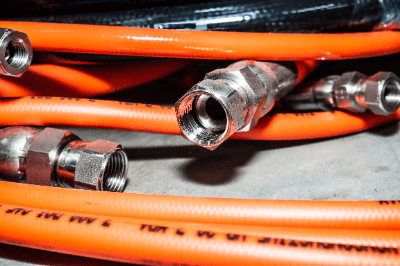What Is a Hose Fitting?

Hose Fitting is a device used to connect different types of hoses and piping.
They enable the transfer of fluids and gases and serve to facilitate the assembly and repair of piping systems. Hose Fitting must be selected from a wide variety of products, the appropriate product depending on the hose material and fluid. Care must be taken because incorrect selection can lead to leaks and accidents.
Uses of Hose Fittings
Hose Fitting is used in a variety of situations. They are primarily used to connect hoses together to minimize fluid and gas leakage.
A typical example is Hose Fitting for watering hoses used in gardens and vegetable gardens. Intermediate fittings for extensions and connection fittings to faucets are both Hose Fittings. Commercially available Hose Fitting for watering can be easily connected, but has the disadvantage of being prone to water leakage.
In factories, they are used to connect piping systems and machinery. In piping systems, they are used to connect pipes of different diameters and types and play an important role in system construction and repair. In mechanical systems, they are used for hydraulic and pneumatic units and play an important role in connecting different types of equipment.
Water supply and sanitation are another application. They are used to supply and drain water, connect showerheads and faucets, and are connected to devices that control the flow of water. They are also useful for supplying air to inflatable products.
Principle of Hose Fittings
Hose Fitting is a device for connecting different hoses and pipes. It consists of the following elements:
1. Connecting Part
Hose Fitting has a connecting piece that is connected to the end of the hose or pipe. The connection is usually cylindrical in shape and may have a spiral groove or barb (projection) inside.
2. Sealing
Hose Fitting connections form a seal. Rubber parts such as O-rings and gaskets are commonly used.
3. Means of Securing
Hose Fitting often has a means of securely fastening the piping to the fitting. Generally, hose clamps or bolts and nuts are used. These means ensure a secure connection between the fitting and the piping and prevent it from being released by external force or pressure.
4. Material and Resistance
Hose Fitting materials should be selected to match the type of fluid used. If resistant materials are selected, they can withstand environmental conditions such as chemicals, high temperatures, and high pressures. Common materials are metals such as stainless steel and brass, and plastics such as polypropylene and nylon.
Types of Hose Fitting
Hose Fittings are available in a great variety of types, depending on the application. The following are examples of Hose Fitting types.
1. Bamboo Shoot Fittings
Bamboo Shoot Fittings are fittings with bamboo shoots that match the inside diameter of the Hose Fitting. The hose is inserted into the Hose Fitting and secured with a hose clamp or similar device. Hose barb fittings are available in a variety of shapes and materials and are generally used for low-pressure fluids.
2. Quick Coupling Fittings
Quick Coupling Fittings are fittings that allow for quick connection and disconnection of Hose Fitting. The connection is made by fitting the coupling at the end of the Hose Fitting to the socket in the body of the fitting. They are widely used in industrial and agricultural hose systems.
3. Threaded Couplings
Hose Fitting is a type of Hose Fitting that is connected by screwing in a hose or pipe. One fitting has an external thread and the other has an internal threaded hole. The connection is made by screwing the Hose Fitting into the pipe.
The feature of this type of fitting is that it is easy to install, and it is usually used in low to medium pressure systems. Auxiliary materials such as sealing tape may be used to ensure a seal.
4. Flange Joint
Hose Fitting is a fitting used to join hoses and pipes at a flat joint called a flange. A seal is formed by fixing the flanges together with bolts and nuts and sandwiching a gasket between them. Flange fittings are generally used for high pressure and large diameters.